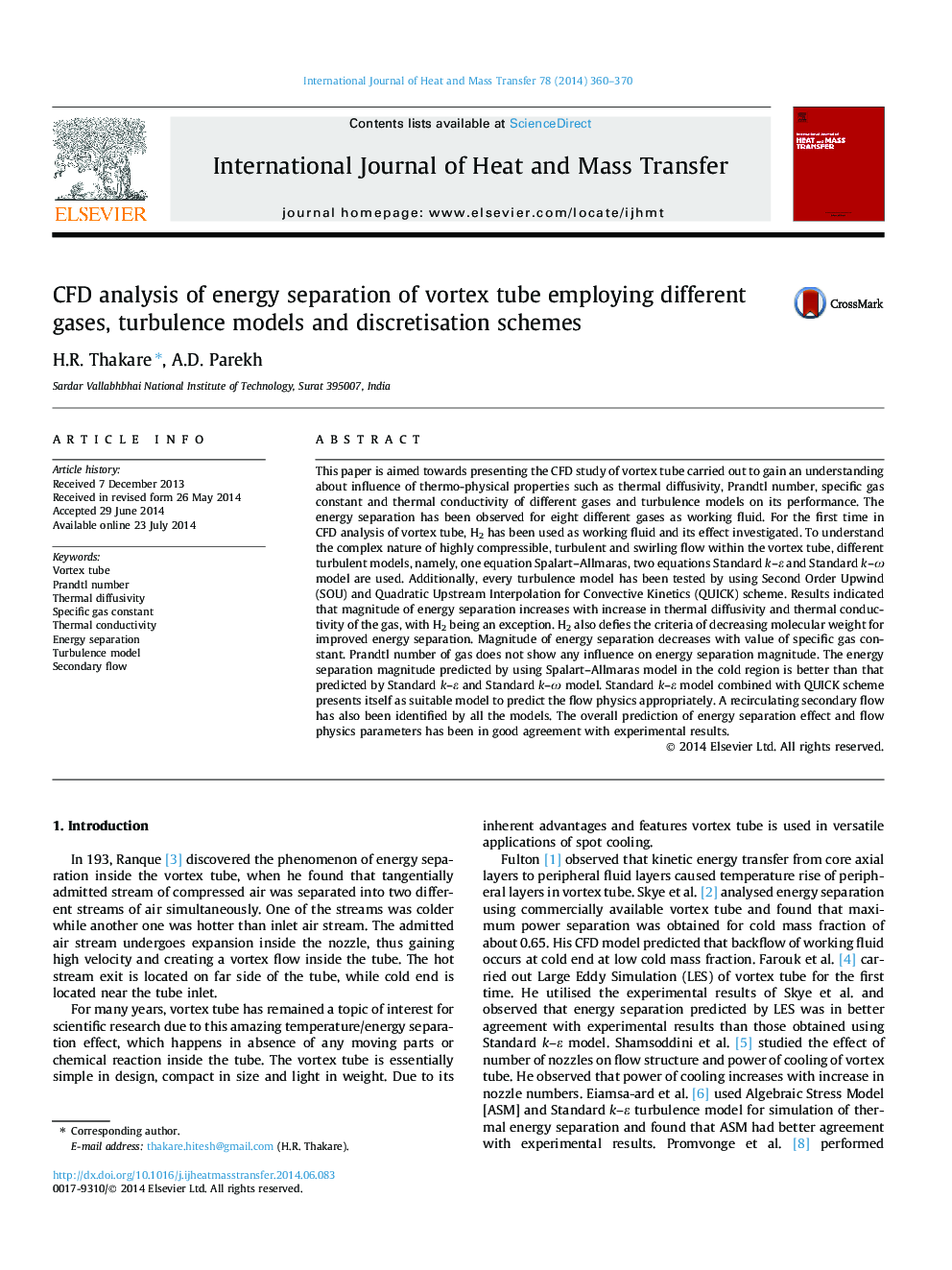| Article ID | Journal | Published Year | Pages | File Type |
|---|---|---|---|---|
| 657705 | International Journal of Heat and Mass Transfer | 2014 | 11 Pages |
This paper is aimed towards presenting the CFD study of vortex tube carried out to gain an understanding about influence of thermo-physical properties such as thermal diffusivity, Prandtl number, specific gas constant and thermal conductivity of different gases and turbulence models on its performance. The energy separation has been observed for eight different gases as working fluid. For the first time in CFD analysis of vortex tube, H2 has been used as working fluid and its effect investigated. To understand the complex nature of highly compressible, turbulent and swirling flow within the vortex tube, different turbulent models, namely, one equation Spalart–Allmaras, two equations Standard k–ε and Standard k–ω model are used. Additionally, every turbulence model has been tested by using Second Order Upwind (SOU) and Quadratic Upstream Interpolation for Convective Kinetics (QUICK) scheme. Results indicated that magnitude of energy separation increases with increase in thermal diffusivity and thermal conductivity of the gas, with H2 being an exception. H2 also defies the criteria of decreasing molecular weight for improved energy separation. Magnitude of energy separation decreases with value of specific gas constant. Prandtl number of gas does not show any influence on energy separation magnitude. The energy separation magnitude predicted by using Spalart–Allmaras model in the cold region is better than that predicted by Standard k–ε and Standard k–ω model. Standard k–ε model combined with QUICK scheme presents itself as suitable model to predict the flow physics appropriately. A recirculating secondary flow has also been identified by all the models. The overall prediction of energy separation effect and flow physics parameters has been in good agreement with experimental results.
